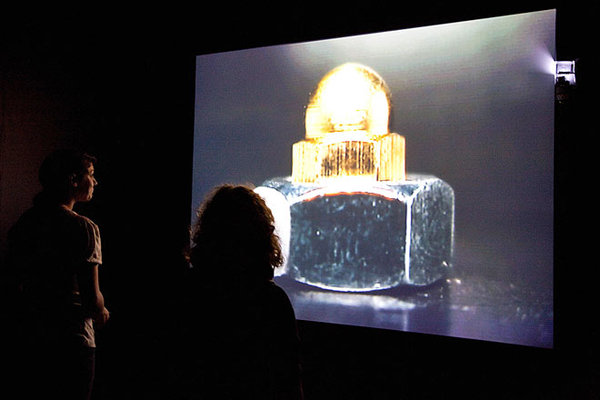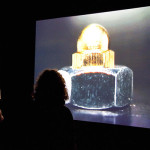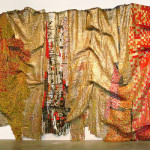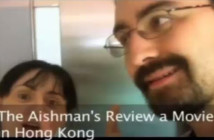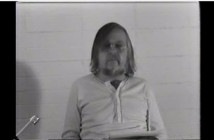It's a 13-hour flight to Dubai.
Not the kind of travel to be taken lightly but worth it for the experience of Art Dubai. For visitors like me, Art Dubai represents more than the other fairs like the Armory Show or Miami Basel because the fair was the best excuse I could come up with to visit the Middle East. Like all art fairs, Art Dubai was primarily focused on sales, however, there was a consolidated effort by the fair to extend beyond the walls of the fair itself in order to become an entire art world event representing the region as a whole. Proof of this was in the number of the auxiliary programs, the many parallel events in the city that were directly supported by the fair, and the "Global Art Forum" lecture series that made the fair feel less like a sales driven event and more like an all encompassing cultural event. Art Dubai fully supported the Al Bastakiya Art Fair, the one official fringe art fair, by running a bus between the fairs and encouraging all visitors to spend time at both fairs. Art Dubai even ran programs in other cities like tours of the Sharjah Museum, or programs in Doha. The fair fully supported the START program, a Middle East based program that helps orphans, refugees and street children in the MENASA (Middle East North Africa South Asia) region, through creative development. While at the fair, I participated in one of START's programs and helped introduce local autistic children to art-making and the fair itself.
While the fair is not in charge of what any individual gallery chooses to show, there were some excellent pieces on display. Some of the highlights included El Anatsui's "In the World But Don't Know the World" piece at London's October Gallery booth. El Anatsui's metal sculpture made from tens of thousands of bottle-tops that evoked sublime awe at its sheer enormity while also provoking a dialog about the cultural, social and economic histories of West Africa.
By far, the most provoking and stimulating piece at Art Dubai was created by the winner of the Abraaj Capital Art Prize, Kader Attia and his curator Laurie Farrell. The Abraaj Capital Art Prize provides $1 million dollars in funding to three curator/artist pairs from MENASA to produce unique pieces for Art Dubai. Algerian born artist Kader Attia and curator Laurie Farrell produced "History of a Myth: Le Petit Dome du Rocher" which is an installation based in deep understanding of history and philosophy. In the piece, the viewer enters a darkened room to see a live camera feed projecting a sculpture of a bolt and nuts enlarged many times its size. The projection of the sculpture evokes the architecture of the Dome of the Rock and in so doing refers to Arab-Muslim history and all of the complexity of issues that surround representations of that history. The most amazing part of the installation is that it is an installation that cannot be accurately described in words, but a viewer must be in the room itself to feel the piece. Throughout the installation, there is a gentle breeze and sounds of nature that are subtly vibrating the sculpture and thus the projection as well. Kader Attia's piece provides a peaceful space of contemplation where the viewer can mediate on the myriad of issues surrounding historical, architectural, political or aesthetic interpretations. The piece is simultaneously peaceful and provocative, troubling and soothing, pensive and visceral. Creating a piece that refuses to fit into any preconceived binary is definitely a piece that should not be missed.
Next year's Art Dubai fair should be even bigger and more comprehensive than this years and is definitely worth 13 hour flight.
- Kader Attia, History of a Myth: The Small Dome of the Rock, Video installation, 2010
- El Anatsui, “In the World, But Don’t Know the World?”, aluminium and copper wire, 2009.
Attia image by Alexzandra Chandler, courtesy of Abraaj Capital Art Prize.
Anatsui via Art Dubai.

